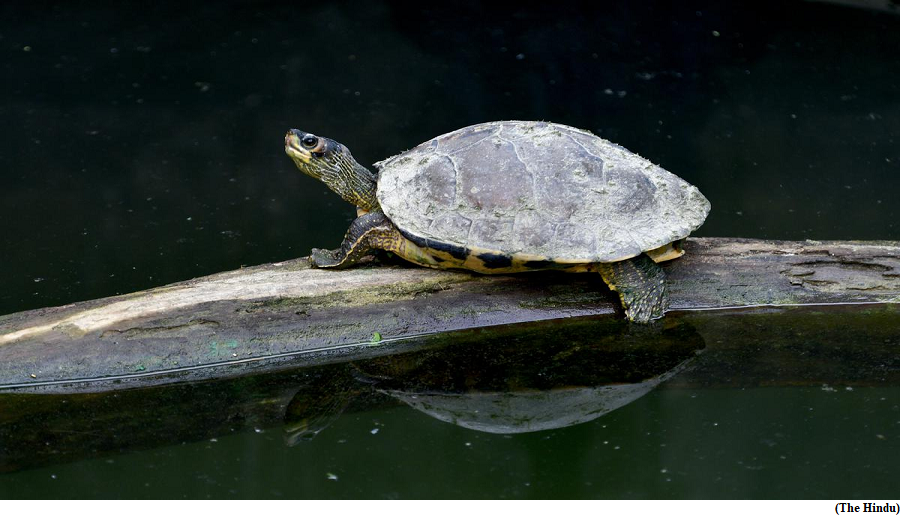In Varanasi, turtles help clean the Ganga (GS Paper 3, Environment)

Why in news?
- Under the Namami Gange Programme, large-scale human efforts have been undertaken since 2014 to clean the Ganga and rejuvenate the nearly 2,600-km river network.
- In this, marine life, especially turtles, has been playing a key role as well.
Namami Gange Programme:
- In 2014, the Wildlife Institute of India (WII) and the Ministry of Forest joined hands with the National Mission for Clean Ganga (NMCG), the agency implementing the Namami Gange Programme.
- Since 2017, they have been running the turtle breeding and rehabilitation centre in Uttar Pradesh’s Varanasi.
Introducing turtles:
- Set up in the late 1980s under the Ganga Action Plan (GAP), the centre has so far released over 40,000 turtles into the river.
- In 2014, the centre got renewed attention after the Central government enlisted it in the Namami Gange Programme.
Nurturing of turtles:
- At the centre, roughly a dozen species are nurtured. The Forest and Wildlife Department’s team brings turtle eggs from the coastal areas of the Chambal region. The turtle eggs, which are monitored for 70 days, are kept in a room that is fully adapted for hatching.
- After filling the ground with water and placing bricks atop, the eggs are buried inside sand in wooden boxes. Only 30 eggs are kept in a box.
- Hatching is completed at temperatures ranging from 27 to 30 degrees Celsius between June and July, and after which the turtles are monitored in an artificial pond for two years before they are released in the river.
Role of turtles:
- About a dozen of the 29 turtle species in India, both herbivorous and carnivorous, help by clearing rotten or half-burnt human bodies as well as flowers dumped into the river.
- The quality of water in Ganga has improved and the turtles have a role as they feed on meat and waste products thrown in the river.
- Improvements in biochemical oxygen demand (BOD), fecal coliform (FC) and dissolved oxygen (DO) levels were seen during river water quality checks.
- During the assessment of the river’s pH levels (i.e. acidic nature) at various locations, the water quality was found suitable for bathing. In 20 locations, they found improved levels of DO, BOD and FC at 16, 14 and 18 locations, respectively.
MeitY receives proposals for self-regulatory organisations in online gaming
(GS Paper 3, Environment)
Why in news?
- The Ministry of Electronics and Information Technology (MeitY) has received three proposals for the establishment of self-regulatory organisations (SROs) in the field of online gaming.
- The proposal for SROs to certify what is permitted as an ‘online game’ in India was first proposed by the Centre in January and after the new regulations were announced in April.

New guidelines:
- According to the new regulations, the government will approve the formation of three SROs responsible for certifying online games in India.
- The rules also prohibit games that involve betting and wagering.
- The approved SRO will also have participation from all the stakeholders including but not limited to the industry.
Online gaming industry associates:
- The Esports Players Welfare Association (EPWA), a non-profit organisation, submitted its application just before the deadline.
- The other two proposals come from a consortium supported by two gaming industry associations—the E Gaming Federation (EGF) and the Federation of Indian Fantasy Sports (FIFS), and a self-regulatory body backed by the All India Gaming Federation (AIGF).
- The EGF includes Games24x7 and Junglee Games as members, while the FIFS consists of Dream11, Fantasy Akhada, and several other fantasy sports startups.
- The AIGF comprises online gaming platforms like Zupee, GamesKraft, Paytm First Games, and MPL.
Way Forward:
- The objective of the new rules is to grow the online gaming sector and encourage innovation.



